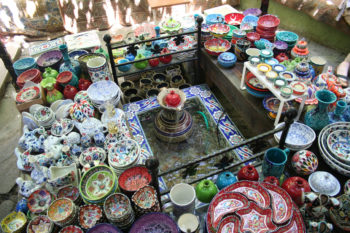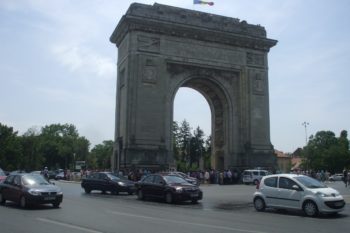This is the first post from Carmen, who is writing from Romania.
Carmen has been working for a Bucharest Radiostation for the last 13 years. She loves music (especially U2); loves English and has a passion for Ireland. Besides Romanian and English she understands French and a little Italian. Carmen has a real passion for foreign cultures and people and I’m sure she will be very pleased to hear from you if you want to say hello or ask questions about Romania.
Also find Carmen on her blog Bucharest Daily Colours.
A legend says that the Dacians (Romanians’ ancestors), considered death just a passing to a better life and celebrated it instead of mourning.
In Maramures (a region in Romania never conquered by the Roman legions) the merry attitude towards death has been preserved.
And what better example than “The Merry Cemetery of Sapanta”. A place where death is welcomed with a smile.
Back in the 1930’s, Stan Ioan Patras, a folk wood artist, painter and poet, made the first merry cross in the world. And then, during more than 50 years, he had created hundreds of them.
All having in the background the famous “Sapanta Blue” and using also other vibrant vegetal colours, like yellow and green.
And all with the same characteristics.
In the upper part of the cross – a painted scene that describes best the dead person’s life & activity.
Then, an epitaph (a 10-17 rhymes amusing or satirical poem, addressed by the dead person to the ones who live).
A famous epitaph:
Underneath this heavy cross
Lies my mother-in-law poor
Had she lived three days more
I would be here and she would read
You that are passing by
Try not to wake her up
For if she comes back home
She’ll bite my head off
But I will act in the way
That she will not return
Stay here my dear
Mother-in-law.
(Images and poem with permission from: Romanian Monasteries.org)
Find out how to get there with this post from Captivating Romania.
Read More:
Which are the most religious countries in the world?
The view from Hungary: blog of a Hungarian student
Celebrating peace and freedom in Costa Rica: the meaning of Independence day






